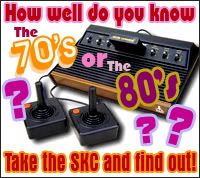Bobby Gonzales, D'Original OFW
By: Guillermo Ramos
His sexuality was never exposed to the public: there were no scandals, no screaming headlines. But it reeked of capital G, as in Gonzales.
Let's play a game! I declared to my assistant Lynn, who was born in 1975. OK, name the singer of this song. I cleared my throat, and in my signature atonal range sang, "O ang babae pag minamahal/ May kursunada Aayaw ayaw…" Easy, she quipped, Apo Hiking Society! I felt as if a baby grand piano had landed on my head and broken my cranium in half. In a fentosecond (a million times faster than a nanosecond!), I tried to regain my composure, clutched my chest, and with a deep breath I whispered through my nostrils, Bobby Gonzales. Bobby who? she asked. Bobby Gonzales sang it. What song? she asked again. The song I was singing a while ago, I said with growing exasperation. Go back to work.
It was a very sad October day when I read in a leading broadsheet that Bobby Gonzales had passed away. Hardly anyone had noticed. And yet this flaming performer deserved to go not with a whimper, but with a bang. This was the man who popularized Hahabol-habol, a rock-n-roll ditty about Pinoy courtship. It was played in all the jukeboxes of all the carinderias and beerhouses from Sta. Ana to Sta. Cruz, San Juan to Santa Mesa. It was on Raon's (the street in Quiapo where you bought the latest vinyl, the Tower Records of its time) top 10 for months! It was a featured song in a Lita Gutierrez movie, Alembong I think.
The first and only time I saw Bobby Gonzales live was in the 60s, when the stars of Villar Records were on a provincial tour to promote Rely Coloma, the wunderkind of the Yamaha Electone Organ. In that musical extravaganza, Sylvia La Torre, Ric Manrique Jr., The Mabuhay Singers and of course Bobby G, were present. They were known collectively as the Villar All-Stars. At that time Bobby had just come back from a stint in Japan. He was proudly showing off his command of Nihongo while being interviewed by Oras ng Ligaya's Oscar Obligacion. No one could comprehend what was going on, but the audience loved it anyway.
I was thunderstruck. His outfits (yes, outfits—he had several costume changes throughout the show) were outrageous. He was wearing a deep purple, magenta and tennis ball green checkered suit, mango yellow trousers, white nurse's shoes and a fully sequined red bow tie. When he launched into Hahabol-habol, and mind you, he was accompanied not by an orchestra but by a rondalla, he practically brought the entire barrio down. Everyone was on their feet, like the audience at the recent China Crisis concert at the PICC. (At least in the barrio, the people were honest with their emotions; I don't know about the last China Crisis concert.) After that barako-infused number, he delivered some spiels in Tagalog. And then his face took on a darker mood. He looked up and whispered, This is for you. He then sang Johnny Ray's classic, Cry. When he was singing that song, I felt very uncomfortable—a mixture of fright, pain and pity—there was something different about him that I couldn't explain. I just ignored whatever it was that was bothering me. I was in denial. No, no, he couldn't be. He is not, I thought to myself. The man is an entertainer, that is all there is. His sexuality was never exposed to the public: there were no scandals, no screaming headlines. But it reeked of capital G, as in Gonzales.
Bobby G's rise to stardom was not laced with paparazzi, champagne and marzipan petit-fours or whatever we think showbiz life ought to be. It was a hard life in the 1950s. In Clover Theater, at the foot of Sta. Cruz Bridge, Bobby Gonzales belted out 25 to 40 songs per show, three shows per day, seven days a week. He was paid 25 pesos a day, which he collected from the box office take on his way out. Katy de la Cruz, the diva of that period, got 50 pesos.
Hard work really paid off for Bobby G. Towards the late sixties his career blossomed, and he recorded hits like Ale Ale, Walastik, Dalagang Suplada and Diyan Ka Na. He hosted radio and television shows like the Big Show that eventually became Oras ng Ligaya with Sylvia La Torre. He was the original OFW singing OPM. He lived for many years in Tokyo, where he developed a strong following. He also played Vegas and Atlantic City with the Reycards Duet. With erstwhile friend Bimbo Danao, they helped build the reputation of Filipinos as "the entertainers of the world".
Today, in hotel lounges from Bahrain to the Bahamas, Filipino bands and singers dot the map of the world. All this is thanks to Bobby G. Late in his career, he was seen regularly at the Intramuros Bar of the Manila Garden Hotel, performing kundiman and Japanese songs. Sometimes, guests who recognized him would request the occasional Johnny Ray tune; he would do it without hesitation, but he would have a hard time reaching the higher octave, and resort to some musical device to remedy the situation. Among his last public appearances was the 47th Famas night in 1999, when he received the Lou Salvador Memorial Award. He died of emphysema in October 4. 2002. And is almost forgotten.
Also read: Bravo! Indios Bravos
Technorati Tags:70s, television, nostalgia












1 comment:
Nice blog on Bobby G. It's sad that people forget entertainers and true musicians such as him so quickly. Too bad he wasn't given the honor he truly deserved while he was still alive...
On another note, would you know if china crisis is coming this january? Heard it quickly on the radio but been surfing for info for it to no avail.
Post a Comment